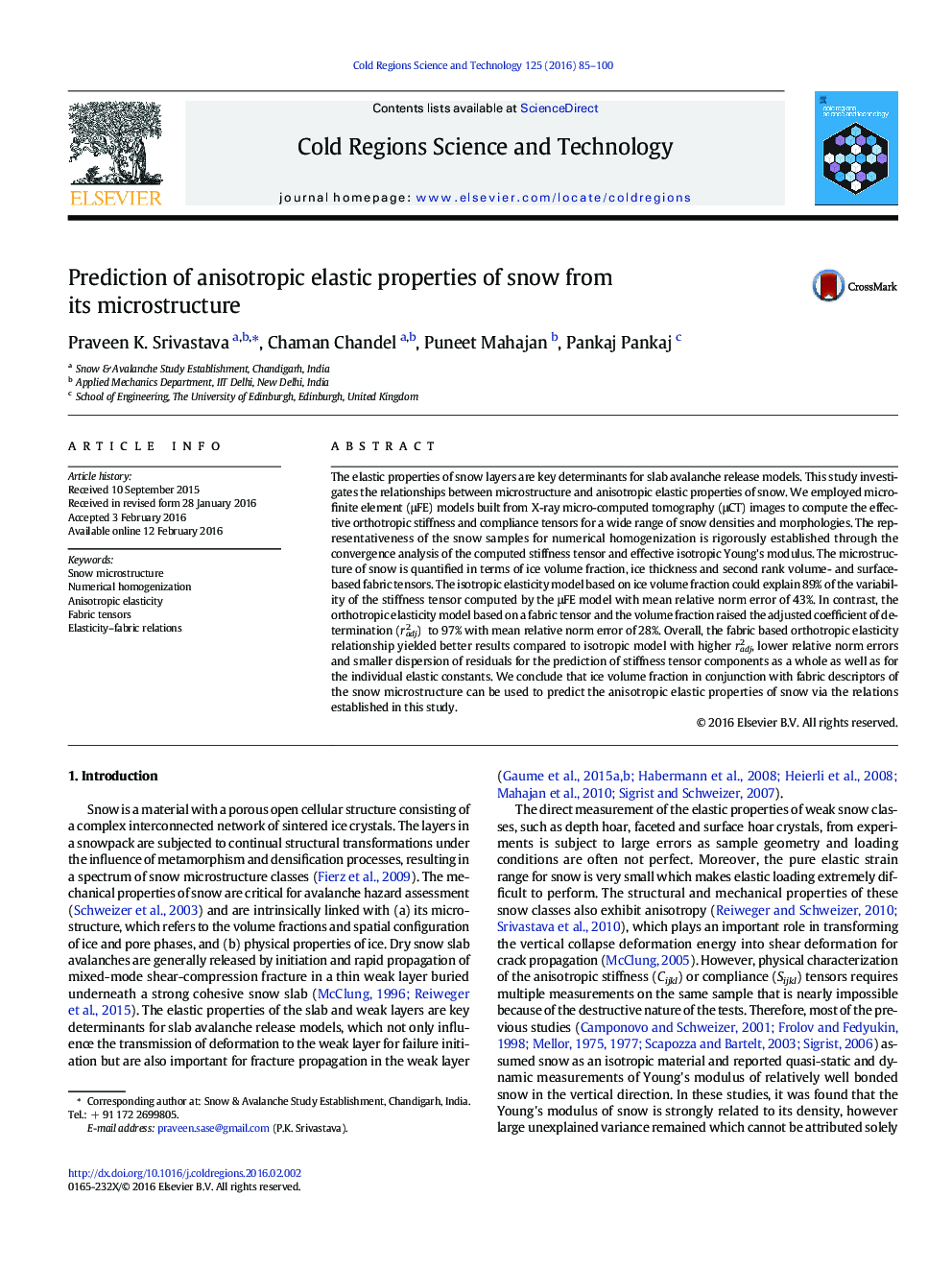| Article ID | Journal | Published Year | Pages | File Type |
|---|---|---|---|---|
| 6426627 | Cold Regions Science and Technology | 2016 | 16 Pages |
â¢Micro-FE computation of homogenized anisotropic stiffness and compliance tensor of snow from 3D X-ray tomography imagesâ¢Characterization of microstructural anisotropy via volume- and surface based fabric tensorsâ¢Established fabric-elasticity relations for snow based on orthotropic and isotropic models
The elastic properties of snow layers are key determinants for slab avalanche release models. This study investigates the relationships between microstructure and anisotropic elastic properties of snow. We employed micro-finite element (μFE) models built from X-ray micro-computed tomography (μCT) images to compute the effective orthotropic stiffness and compliance tensors for a wide range of snow densities and morphologies. The representativeness of the snow samples for numerical homogenization is rigorously established through the convergence analysis of the computed stiffness tensor and effective isotropic Young's modulus. The microstructure of snow is quantified in terms of ice volume fraction, ice thickness and second rank volume- and surface-based fabric tensors. The isotropic elasticity model based on ice volume fraction could explain 89% of the variability of the stiffness tensor computed by the μFE model with mean relative norm error of 43%. In contrast, the orthotropic elasticity model based on a fabric tensor and the volume fraction raised the adjusted coefficient of determination (radj2) to 97% with mean relative norm error of 28%. Overall, the fabric based orthotropic elasticity relationship yielded better results compared to isotropic model with higher radj2, lower relative norm errors and smaller dispersion of residuals for the prediction of stiffness tensor components as a whole as well as for the individual elastic constants. We conclude that ice volume fraction in conjunction with fabric descriptors of the snow microstructure can be used to predict the anisotropic elastic properties of snow via the relations established in this study.
Graphical abstractDownload full-size image
